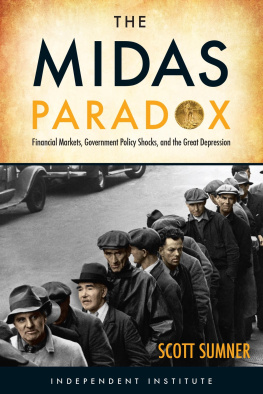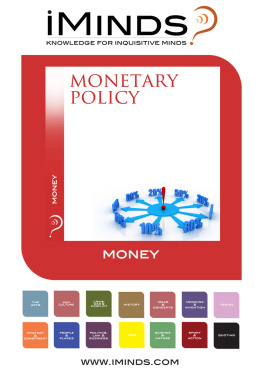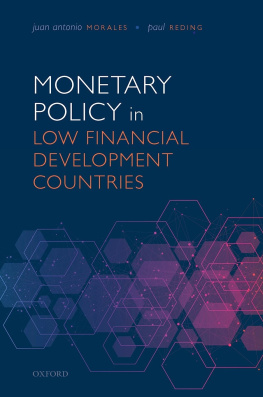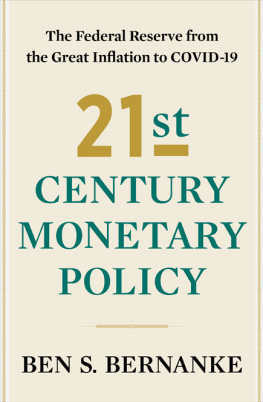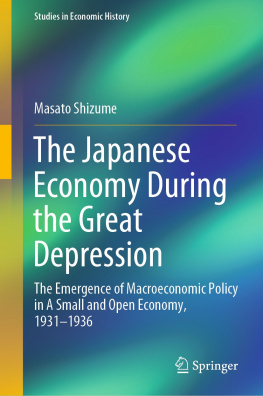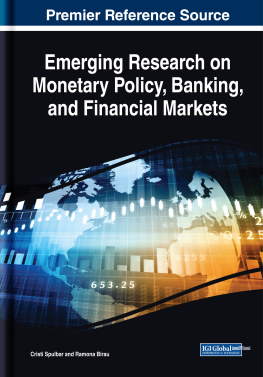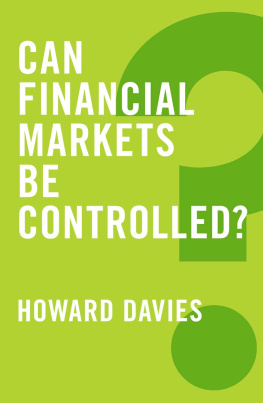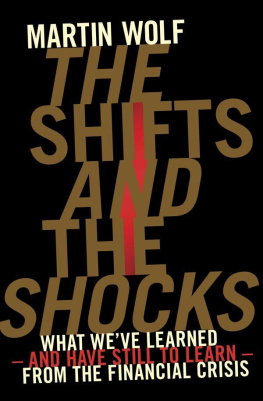INDEPENDENT INSTITUTE
THE

E conomic historians have made great progress in unraveling the causes of the Great Depression, but not until Scott Sumner came along has anyone explained the multitude of twists and turns the economy took. In The Midas Paradox: Financial Markets, Government Policy Shocks, and the Great Depression, Sumner offers his magnum opusthe first book to comprehensively explain both monetary and non-monetary causes of that cataclysm.
Drawing on financial market data and contemporaneous news stories, Sumner shows that the Great Depression is ultimately a story of incredibly bad policymakingby central bankers, legislators, and two presidentsespecially mistakes related to monetary policy and wage rates. He also shows that macroeconomic thought has long been captive to a false narrative, which continues to misguide policymakers in their quixotic quest to promote robust and sustainable economic growth.
The Midas Paradox is a landmark treatise that solves mysteries that have long perplexed economic historians and corrects misconceptions about the true causes, consequences, and cures of macroeconomic instability. Like Milton Friedman and Anna J. Schwartzs A Monetary History of the United States, 18671960, it is one of those rare books destined to shape future research and debate on the subject.
THE

THE

Financial Markets, Government Policy Shocks, and the Great Depression
SCOTT SUMNER

OAKL AND, CALIFORNIA
Copyright 2015 by the Independent Institute
All Rights Reserved. No part of this book may be reproduced or transmitted in any form by electronic or mechanical means now known or to be invented, including photocopying, recording, or information storage and retrieval systems, without permission in writing from the publisher, except by a reviewer who may quote brief passages in a review. Nothing herein should be construed as necessarily reflecting the views of the Institute or as an attempt to aid or hinder the passage of any bill before Congress.
Independent Institute
100 Swan Way, Oakland, CA 94621-1428
Telephone: 510-632-1366
Fax: 510-568-6040
Email:
Website: www.independent.org
Cover Design: Denise Tsui
Cover Image: 1935 / AP Photo
Library of Congress Cataloging-in-Publication Data
Sumner, Scott
The Midas paradox : financial markets, government policy shocks, and the Great Depression / Scott Sumner.
528 pages cm
Includes bibliographical references and index.
ISBN 978-1-59813-150-5 (hardcover : alk. paper) -- ISBN 978-1-59813-151-2 (pbk. : alk. paper)
1. Depressions--1929--United States. 2. Monetary policy--United States--History--20th century. 3. United States--Economic policy--20th century. I. Title.
HB37171929 .S86 2015
330.9730917--dc23
2013043553
For my mother
Contents
Preface
I FIRST STUDIED macroeconomics during the highly inflationary 1970s. Like many students of that era, I was greatly influenced by monetarist ideas, particularly A Monetary History of the United States, written by Milton Friedman and Anna Schwartz. By the mid 1980s, I began to discover a new approach to monetary history, one that focused on the constraints of the international gold standard, not the quantity of money in a particular country. Because I had found the views of Friedman and Schwartz to be quite persuasive, but also saw merit in the new gold standard view of the Depression, I was forced to try to reconcile these two perspectives.
This book represents the fruits of two decades of research on the role of gold in the Great Depression. I began by trying to think through the concept of monetary policy under a gold standard. If interest rates and commodity prices were determined internationally via arbitrage, in what sense could a country be said to have an independent monetary policy? Ultimately, I decided that the gold reserve ratio was the most sensible way of thinking about the stance of monetary policy under a gold standard. When I worked out the numbers, I was surprised to find that world monetary policy tightened sharply between October 1929 and October 1930, a policy shift that had been missed by previous researchers.
Next, I discovered that the gold ratio wasnt the only important way in which the gold standard impacted macroeconomic conditions during the 1930s. Private gold hoarding increased sharply on four occasions; each of which was associated with falling output and falling asset prices in the U.S. Changes in the price of gold were extremely important during 193334, as rising gold prices led to rising asset prices and economic recovery. I also discovered interesting links between government policies that impacted the global gold market, asset market prices, and the broader macroeconomy. In particular, markets seemed to anticipate the effects of policy shifts, and there were even cases where the effects of policy seemed to precede the causes.
Obviously, effect cannot precede cause; what was actually happening was that markets were anticipating that gold market disturbances would impact future monetary policy, and this caused asset prices to respond immediately to the expected change in policy. Broader price indices and even industrial production also responded surprisingly quicklynot the long and variable lags often assumed by macroeconomists.
Much of this work was done in the 1980s and 1990s, and I was quite pleased that three of these papers were cited by Gauti Eggertsson in 2008, in an important article in the American Economic Review. Eggertsson applied cutting edge new Keynesian models to the gold standard era, which suggested that anticipations of future monetary policy would often have a much more powerful impact on current conditions than the current stance of monetary policy. I had stumbled on some ideas that had important implications for theoretical macroeconomics.
By the early 1990s, I was beginning to think in terms of a comprehensive narrative of the Great Depression. The idea was to do something roughly analogous to Friedman and Schwartzs seminal work, but from a gold standard perspective. Instead of focusing on the famous MV=PY equation as the organizing principle, I developed some identities relating the gold market to the macroeconomy, and then collected the relevant data.
When I reached the middle of 1933, however, I noticed that the monetary approach to the Great Depression seemed to suddenly break down. Thats when I turned my attention to the role of wages, which were raised by over 20 percent in just two months, from July to September 1933. This would be the first of five wage shocks, each of which set back a promising recovery. At that point, I did some research with Stephen Silver on the issue of wage cyclicality during the Great Depression.
When I combined the two approaches, a monetary approach based on the gold market, with a supply-side approach based on legislated wage shocks, I had a model that provided an excellent fit for the entire period from 1929 to 1940, indeed, in some respects, for the entire interwar period. Unfortunately, the project kept getting delayed (once a years worth of work was simply lost), and hence this book is coming out many years after the original research was done.
Next page
